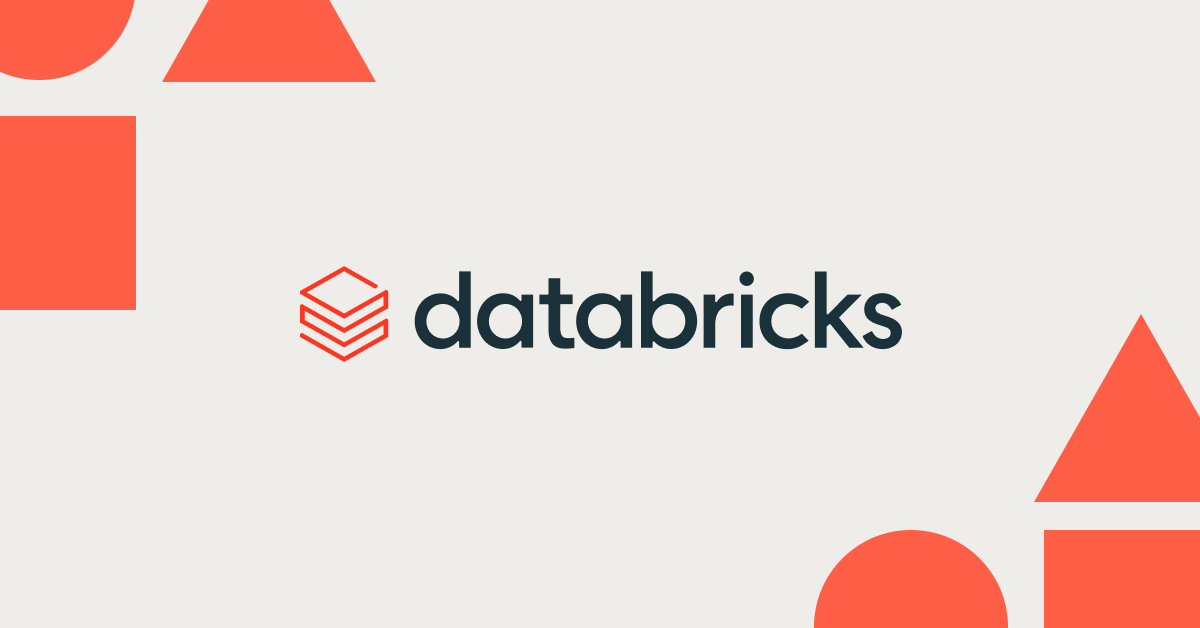From Booking to Bon Voyage: How AI Is Redefining the Travel & Hospitality Experience
Powering Seamless, Personal Guest Journeys with Databricks and AI

Summary
- AI transforms the guest journey — From trip inspiration to post-stay loyalty, AI powered by unified, real-time data enables hyper-personalized experiences, proactive service, and dynamic offers.
- Databricks as the data + AI backbone — Unifies operational, behavioral, and partner data (including unstructured) to drive instant personalization, predictive recovery, and partner collaboration through secure clean rooms.
- Proven business impact — Travel brands using Databricks see gains like ↑ conversion (20%), ↑ in-stay spend (20%), ↓ churn (15%), and improved operational efficiency across awareness, booking, and on-property stages.
Travel has always been about more than just getting from point A to point B—it’s about the anticipation before a trip, the moments that surprise and delight during a stay, and the memories that linger long after check-out.
For decades, delivering those moments at scale has been a challenge. Marketing teams relied on broad demographics and seasonal promotions. Service teams worked heroically to meet needs they often only learned about after a guest spoke up. And data—fragmented across booking engines, loyalty programs, property systems, and partner platforms—rarely told a complete story about each traveler.
That’s all changing. AI, powered by unified, high-quality data, is enabling a fundamental reinvention of how travel and hospitality brands engage guests. Today, instead of browsing endless lists of flights or hotels, a traveler can express an intent—“a long weekend wine getaway with vineyard tours and a spa”—and instantly receive a curated itinerary that weaves together flights, accommodations, activities, and dining, perfectly aligned with their preferences and loyalty perks.
Once on property, AI-enabled concierge systems can remember a returning guest’s favorite room, anticipate needs based on weather and local events, and coordinate offers from ecosystem partners—like securing a last-minute wine tasting at a nearby vineyard or arranging premium airport transfers. Real-time feedback loops capture and resolve issues before they escalate, preserving satisfaction and loyalty.
This is more than incremental improvement—it’s a complete reimagining of the guest experience, and it’s being built on the Databricks Data Intelligence Platform, which allows brands to securely unify and enrich guest data and act in real-time across the travel ecosystem.
AI across the guest journey: with real-world customer impact
| Stage | AI Impact Description | Use Cases | KPIs & Expected Improvements | Databricks Customer Example |
|---|---|---|---|---|
| Awareness | Inspire travel through intent-based targeting and content tailored to preferences. | AI media buying to reach likely travelers with relevant offers; generative video and imagery to evoke destinations. | ↑ CTR by 30%, ↓ CPM by 25% [McKinsey] | GetYourGuide used Databricks to speed up pipeline execution by 60%, enabling faster delivery of targeted, high-quality activity recommendations in ads. |
| Consideration | Shift from SKU-led browsing to experience-led discovery. | Conversational AI packages flights, stays, and activities around an expressed intent (“family ski trip” or “luxury island escape”). | ↑ booking conversion by 20% [BCG] | Hotels.com leveraged Mosaic AI to deliver richer, image-based hotel search experiences, boosting engagement and conversion rates. |
| Purchase | Increase booking value with dynamic bundling and pricing. | Offer upgrades (rooms, dining, spa) and partner experiences in checkout, priced and timed for optimal uptake. | ↑ AOV by 15–25%, ↓ abandonment by 10% [Deloitte] | Adani Digital Labs unified travel, F&B, and retail data to deliver real-time upsells via their super app, reducing operational cost by 29%. |
| Check-in / Onboarding | Personalize arrival and upsell opportunities. | Mobile concierge confirms preferences, offers upgrades, and books activities ahead of arrival. | ↑ upsell conversion by 10%, ↑ guest satisfaction | Virgin Australia unified operational and customer data, enabling faster ML deployment and better real-time offers at key touchpoints like check-in. |
| In-Stay Experience | Anticipate needs and enable proactive recovery. | AI concierge suggests activities based on preferences; IoT alerts staff to issues before guests complain. | ↑ in-stay spend by 20%, ↑ NPS by 15, ↓ recovery costs by 30% | Heathrow Airport uses Databricks to anticipate passenger flow peaks, allowing smoother operations that inspire similar proactive service approaches in hospitality. |
| Loyalty & Advocacy | Recognize promoters in real time and deepen engagement. | Real-time referral prompts; loyalty offers personalized to guest history and preferences. | ↑ repeat bookings by 20%, ↑ referrals by 10% | MakeMyTrip increased customer loyalty by intelligently targeting relevant customers per the customer lifecycle journey and driving micro-segmented communications that improved the relevance of campaigns. |
| Recovery / Retention | Intervene before dissatisfaction leads to attrition. | Real-time alerts trigger personalized recovery offers mid-stay (e.g., complimentary spa session). | ↓ churn by 15%, ↑ satisfaction recovery by 25% | Amadeus examines factors like travel timing and delays between journey touchpoints to help predict traveler engagement at each stage, all while ensuring that data and insights meet the highest security standards. |
Clean Rooms: collaboration without compromise
The most transformative opportunities in travel often live between brands—an airline and a resort, a cruise line and a local tour operator, an airport and its retail partners. Databricks clean rooms make it possible to:
- Share and enrich guest data securely without exposing raw records.
- Combine signals from multiple sources to better understand intent and context.
- Activate joint marketing and service workflows in real time.
For example, a resort and airline could collaborate in a clean room to identify loyalty members traveling together and target them with bundled upgrade offers for both flights and accommodations—without either party sharing personally identifiable information outside governed controls.
Why Databricks is the competitive differentiator
In travel and hospitality, the difference between a delighted guest and a lost opportunity can happen in minutes. A delayed alert about a room service issue, a missed upsell for a shore excursion, or a generic loyalty offer that doesn’t reflect the guest’s preferences — all of these erode satisfaction and revenue. Delivering the next generation of guest experiences means unifying operational, behavioral, and partner data in real time, then using it to anticipate needs, personalize offers, and recover service issues before they impact the stay.
The challenge is that much of the most valuable data in travel and hospitality is unstructured or dynamic — images from shipboard cameras or restaurant kitchens, open-text customer reviews, IoT signals from stateroom climate systems, and moment-to-moment booking activity across channels. Traditional batch systems can’t keep pace with guest expectations for immediacy, nor can they handle the scale and diversity of these datasets. Databricks solves these challenges with an open, unified Lakehouse that integrates real-time ingestion, computer vision, natural language processing, and governed feature sharing to deliver accurate personalization, deeper loyalty engagement, and seamless experiences across the guest journey.
| Travel & Hospitality Requirement / Priority | Technical Barriers | How Databricks is Differentiated |
|---|---|---|
| Real-time operational visibility across ships, resorts, and restaurants | Legacy batch data pipelines from PMS, POS, and IoT systems delay insights; fragmented data across properties, ships, and partners. | Delta Live Tables for low-latency ingestion from PMS, POS, and IoT; Databricks unifies streaming and historical data for a single operational view; built-in geospatial analytics for fleet and property monitoring. |
| Personalized offers and loyalty engagement at the moment of decision | Disconnected booking, spend, and activity data prevents timely personalization; loyalty systems updated infrequently. | Databricks Data Intelligence Platform unifies booking, spend, and activity data; Mosaic AI and Model Serving powers real-time personalization and loyalty models at scale; powerig dynamic offers tuned to guest context and preferences. |
| Analyzing unstructured feedback for service recovery | Customer reviews, survey comments, and call center transcripts are siloed and difficult to process at scale. | Mosaic extracts sentiment and key themes from guest reviews and feedback; results feed into real-time recovery workflows; Unity Catalog governs sensitive text data. |
| Monitoring quality and compliance via images/video | Shipboard and restaurant image/video streams not integrated into analytics; computer vision processing limited or offline. | Mosaic Vision processes images and video streams from ships, kitchens, or venues for quality checks, cleanliness verification, and compliance; streaming inference surfaces alerts instantly. |
| Dynamic excursion, dining, and amenity recommendations | Static recommendation engines based on historical data miss real-time opportunities; lack of integration with current occupancy, availability, and weather. | Databricks Delta Lake combines real-time availability, guest preferences, and contextual data (e.g., weather, location) in a single, well managed repository; Mosaic AI generates next-best-activity suggestions delivered via mobile app or in-room devices. |
| Secure, privacy-compliant collaboration with travel partners | Manual or batch-based data sharing with airlines, tour operators, and booking partners; compliance concerns prevent raw data movement. | Databricks Delta Sharing + Clean Rooms for secure, real-time collaboration on loyalty, booking, and spend data; Unity Catalog enforces granular access controls and auditability across partner ecosystems. |
At the Data + AI Summit, travel leaders using Databricks emphasized that the brands winning in AI-powered personalization are those that can integrate data across silos and partners, and act on it instantly.
A brighter path for guests and brands
The future of travel and hospitality will be defined by intent-driven discovery, predictive personalization, and proactive service recovery. With Databricks as the data and AI backbone, every interaction—from the first moment of inspiration to the farewell at check-out—can be informed, timely, and deeply personal.
Guests will remember more than the destination. They’ll remember how seamlessly they were guided there, how every detail felt designed for them, and how every potential issue was met with an effortless solution.
And brands? They’ll enjoy deeper loyalty, higher share of wallet, and stronger operational efficiency—achieved not through guesswork, but through intelligent, collaborative data.
Never miss a Databricks post
What's next?

Retail & Consumer Goods
September 20, 2023/11 min read
How Edmunds builds a blueprint for generative AI

Retail & Consumer Goods
September 9, 2024/6 min read